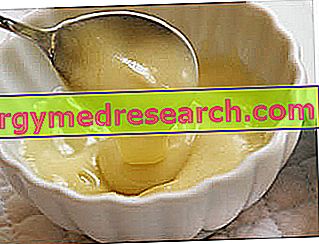Mayonnaise is a culinary preparation based on the emulsion of egg yolk and oil, which is successfully combined with different dishes. In the category of food sauces, its versatility is unprecedented; some of the classic examples of the combination with mayonnaise are: pitch and both cold and hot fishery products, cold meat, boiled eggs and vegetables.

Mayonnaise is born approximately in the XIIX century, but the origins of the name are still a cause for discussion. Some historians associate the term "mayonnaise" with an archaic French word: Moyeau, whose term means "egg yolk"; more romantic, the theory that in 1757, in the Spanish city of Mahon, the military cook Armand De la Port successfully improvised a raw sauce made from egg yolk and olive oil.
Mayonnaise is a remarkably caloric food and its use should be limited to a teaspoon or at most two at a time, and in any case sporadically. The frequency of consumption of this raw sauce depends on: composition of the diet, quantities consumed and any overweight and alterations of the lipidemic picture.
For 100g of edible portion, the mayonnaise provides:
Energy 655 kcal - Proteins 4.3g - Glucides 2.1g - Lipids 70g of which:
B.C. Saturated fats tot 6.93g - Ac. Monounsaturated fats tot 14.14g - Ac. Polinsaturiaturi fats tot 46, 06g - Ac. Linoleic 40, 88g - Ac. Linolenic 5.18g - Cholesterol 70mg
Ac Report Polyunsaturated / Saturated Fats 6.6.
Bibliographic source: "Food Composition Tables"
The energy conferred by 100g of mayonnaise is made mainly by lipids (96.2%), and although the ratio of fatty acids clearly favors polyunsaturated fats, mayonnaise must be used in quantities similar to those of a condiment.
In qualitative terms, mayonnaise "could" be an excellent food; the fatty acids contained are mainly polyunsaturated and the egg yolk proteins are distinguished by their high biological value. However, it is appropriate to make a clear distinction between industrial mayonnaise and artisan mayonnaise, better known as "homemade mayonnaise". The two products do not differ as much for their energy supply as for the origin of raw materials and the presence of food additives contained in them; the grandmother's mayonnaise has a rather demanding procedure and the shelf life, as well as the microbiological safety of the raw materials, are strongly limited by the peroxidation of fatty acids and by the contamination (above all bacteriological) of ubiquitous saprophytes. On the other hand, it is a product that differs in the high quality of the raw materials; the ingredients are: raw egg yolk of free-range hen (no feed and raised on the ground), seed oil or better extra virgin olive oil (between the two there are substantial organoleptic and biochemical differences, but on the other hand, « de gustibus non est disputandum " ), wine vinegar" made from wine ", fresh lemon juice, iodized sea salt and white pepper.
On the contrary, the industrial product has an excellent shelf life and, as is said in the culinary environment, "it does not hurt even on the balcony in August!" The counter mayonnaise is undoubtedly a product that makes it possible to carry out innumerable preparations which, with respect to the food hygiene regulations of collective catering, would have no way of being supplied. Among the ingredients we find: sunflower oil, pasteurized eggs (also fresh), wine vinegar, salt, sugar, lemon juice, natural flavors, acidity corrector (lactic acid), acid esters (p-hydroxybenzoic acid and its salts), antioxidants (ascorbyl palmitate, natural extracts containing tocopherol, synthetic tocopherol), thickeners (alginates) and emulsifiers.
A final consideration in favor of home-made mayonnaise: its domestic preparation, rather demanding if done by hand, allows to considerably moderate the consumption of this sauce, counteracting the high calories of dishes consumed within the home. At the same time, it is also advisable (especially for those who frequently eat in bars and fast-food restaurants) to carefully evaluate the quantity of mayonnaise present in fast food dishes; the content of this ingredient significantly affects the caloric balance and the fat percentage of the meal consumed.
Let it be clear to the kind readers that the article goes beyond any unsuccessful controversy or moralism and has the simple function of illustrating the strengths and weaknesses of 2 apparently similar products, but ultimately very different in chemical composition and organoleptic quality.
Homemade Light Mayonnaise - Alice's Videoricetta
Undoubtedly cheaper and poor in calories compared to industrial mayonnaise, it does not fear comparisons in terms of flavor. Word of Alice, the Personal Cooker of MypersonaltrainerTv that in this videoricetta shows in detail how to prepare a light homemade mayonnaise, with its tantalizing variation to the yougurt. Alternatively, you can try the vegan mayonnaise without eggs and without cholesterol or that of light mayonnaise without oil.
Light mayonnaise without oil
X Problems with video playback? Reload from YouTube Go to Video Page Go to Video Recipes Section Watch the video on youtube



